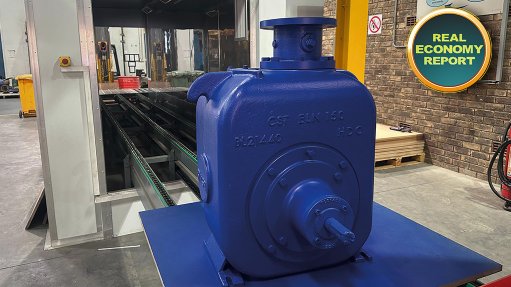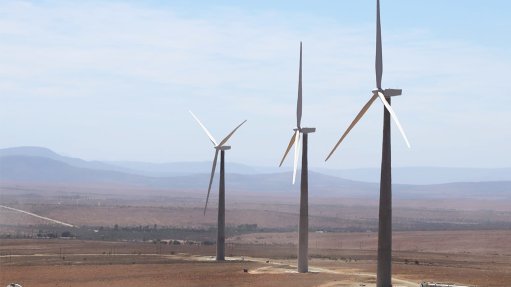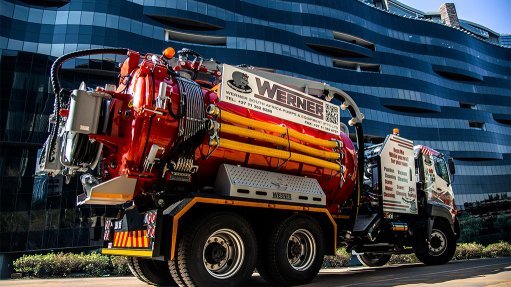South Africa’s Growing Appetite for Online Food – and What It Means for Retailers
This article has been supplied and will be available for a limited time only on this website.
By: James Noble - Sector Executive for Wholesale, Retail and Franchising at Absa Business Banking
If one were looking for an indicator of how much food buying has moved online in South Africa, they could look to the roads. Conservative estimates put the number of delivery bikes moving from store to door each day at more than 50,000, a figure that would have been inconceivable only a few years ago.
As in much of the world, the initial surge, and the exponential growth that followed, began during the pandemic years, when restrictions forced a permanent shift in consumer behaviour. Both large retailers and small, independent stores have had to adapt: on one end, major chains have built dark stores and internalised delivery at scale; on the other, mom-and-pops have increasingly turned to online storefronts and third-party ordering platforms to stay visible and connected to their customers.
For instance, Checkers was among the first major retailers to open a dark store – a dedicated warehouse designed solely to fulfil online orders – in 2022 to support its growing on-demand shopping platform, Sixty60. The Shoprite Group now offers Checkers Sixty60 deliveries from 694 stores across South Africa, up from 539 the previous year, generating R18.9 billion in online sales of groceries, liquor, and general merchandise – a 48 percent increase year on year.
The impact on in-store spending has been considerable.
Absa’s latest Merchant Spend Analytics shows that online purchases have maintained strong double-digit growth, with their share of total card spending rising from 7% in August 2022 to 11% in August 2025. Food is one of the largest categories within that shift, increasing its share of online spending from 19.8% to 22.5% over the same period. At the same time, online food spend increased by 47% year-on-year in the year through August, compared to just 2% for in-store food spend.
There is clearly a growing appetite for buying food online, much of it centred on convenience – whether through saving time and transport costs by avoiding queues and travel to physical stores, or through the flexibility of shopping anytime, anywhere. That is not to say there are no downsides: delivery fees, inconsistent product availability, and uncertainty over the freshness of items selected by someone else are common concerns. Many of these issues are being addressed as the sector matures, but for now, much of the momentum comes from advances in technology and physical infrastructure.
The applications of artificial intelligence are perhaps among the most significant. The technology is already being used to learn from customers’ spending patterns, recognising when certain items are purchased regularly and prompting reorders before they run out. As algorithms improve, they will begin to anticipate broader lifestyle preferences, tailoring product suggestions and even building carts that reflect household and dietary habits. Some systems are also being trained to identify discounts across retailers and recommend combinations that maximise value. In time, AI will connect more seamlessly with smart-home devices, such as fridges and pantries that track consumption, to automatically restock essentials as supplies fall.
The physical systems that move food from warehouse to doorstep are evolving just as quickly. Retailers are investing in moving fulfilment closer to the customer through smaller, strategically located dark stores that enable faster delivery, tighter control of stock, greater flexibility in managing demand, and more efficient use of labour. It is encouraging to see this model extending into townships and areas beyond major urban centres, widening access and improving service reach. This localisation, together with advances in last-mile logistics, is likely to accelerate further in the coming years.
What then does this all mean for retailers?
Those with strong store networks will need to find new ways to drive growth, whether by improving the in-store experience or by blending digital touchpoints into how customers shop. The retailers investing in solid online platforms and smoother delivery systems are already capturing a larger share of spending. Staying competitive now depends less on size and more on how quickly a business can adapt to where and how people choose to buy.
That means allocating capital with greater precision and directing it toward technologies that genuinely enhance how customers shop. Automation, whether for a small retailer or a national chain, is costly, and investment decisions should be guided by clear evidence of customer need rather than novelty. Retailers also need to manage what happens behind the screen, because digital demand only creates value when fulfilment systems can keep pace – when inventory is accurate, deliveries are predictable, service quality is consistent, and payments clear instantly. This shift will also require rethinking working capital cycles to align with a faster rhythm of smaller, more frequent purchases.
Local e-commerce turnover is expected to exceed R130 billion by the end of this year, which is nearly 10% of South Africa’s total retail market. The demand for online services is not slowing, and retailers, food or otherwise, will have to move quickly or risk missing out.
Article Enquiry
Email Article
Save Article
Feedback
To advertise email advertising@creamermedia.co.za or click here
Comments
Press Office
Announcements
What's On
Subscribe to improve your user experience...
Option 1 (equivalent of R125 a month):
Receive a weekly copy of Creamer Media's Engineering News & Mining Weekly magazine
(print copy for those in South Africa and e-magazine for those outside of South Africa)
Receive daily email newsletters
Access to full search results
Access archive of magazine back copies
Access to Projects in Progress
Access to ONE Research Report of your choice in PDF format
Option 2 (equivalent of R375 a month):
All benefits from Option 1
PLUS
Access to Creamer Media's Research Channel Africa for ALL Research Reports, in PDF format, on various industrial and mining sectors
including Electricity; Water; Energy Transition; Hydrogen; Roads, Rail and Ports; Coal; Gold; Platinum; Battery Metals; etc.
Already a subscriber?
Forgotten your password?
Receive weekly copy of Creamer Media's Engineering News & Mining Weekly magazine (print copy for those in South Africa and e-magazine for those outside of South Africa)
➕
Recieve daily email newsletters
➕
Access to full search results
➕
Access archive of magazine back copies
➕
Access to Projects in Progress
➕
Access to ONE Research Report of your choice in PDF format
RESEARCH CHANNEL AFRICA
R4500 (equivalent of R375 a month)
SUBSCRIBEAll benefits from Option 1
➕
Access to Creamer Media's Research Channel Africa for ALL Research Reports on various industrial and mining sectors, in PDF format, including on:
Electricity
➕
Water
➕
Energy Transition
➕
Hydrogen
➕
Roads, Rail and Ports
➕
Coal
➕
Gold
➕
Platinum
➕
Battery Metals
➕
etc.
Receive all benefits from Option 1 or Option 2 delivered to numerous people at your company
➕
Multiple User names and Passwords for simultaneous log-ins
➕
Intranet integration access to all in your organisation

















